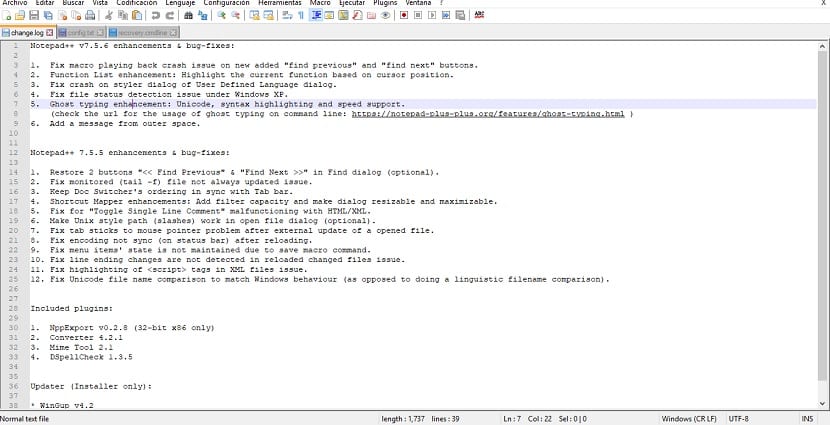

Each of these has its own visualization system that the program will use to suggest autocomplete options or allow you to compress lines of code between brackets. This method of saving helps programmers to save their projects at different stages. The supported languages include C, Java, XML, HTML, PHP, JavaScript, RC resource files, makefile, ASCII art files, doxygen, ini files, ASP, VB/VBS files, SQL, Objective-C, CSS, Pascal, Perl and Python. Instead of saving each and every file opened in Notepad++, we can save all the files in a particular session file. It also allows you to search for words or phrases using regular expressions. The changes that you make in one visualization of the document will also appear in the others. You can visualize and work with a number of documents at the same time using different tabs and even modify different views of the same file at the same time. In addition, you can personalize the style for each supported language, selecting the color, typeface, font size and style for the key words. Its features include syntax for different programming languages, which you can completely personalize. In addition to working with plain text, it can be used as a source code editor by programmers, and it's compatible with more than 50 languages. How to install the latest version of Notepad++: Create a new sub-folder called toolbarIcons in that same folder. If you no more needed Notepad++ on your machine, remove it via the following command.

Notepad++ is an excellent plain text editor with all of the features you miss from your traditional Notepad. Notepad++ 64-bit should be installed and find entries in the Programs and Features in the Control Panel.


 0 kommentar(er)
0 kommentar(er)
